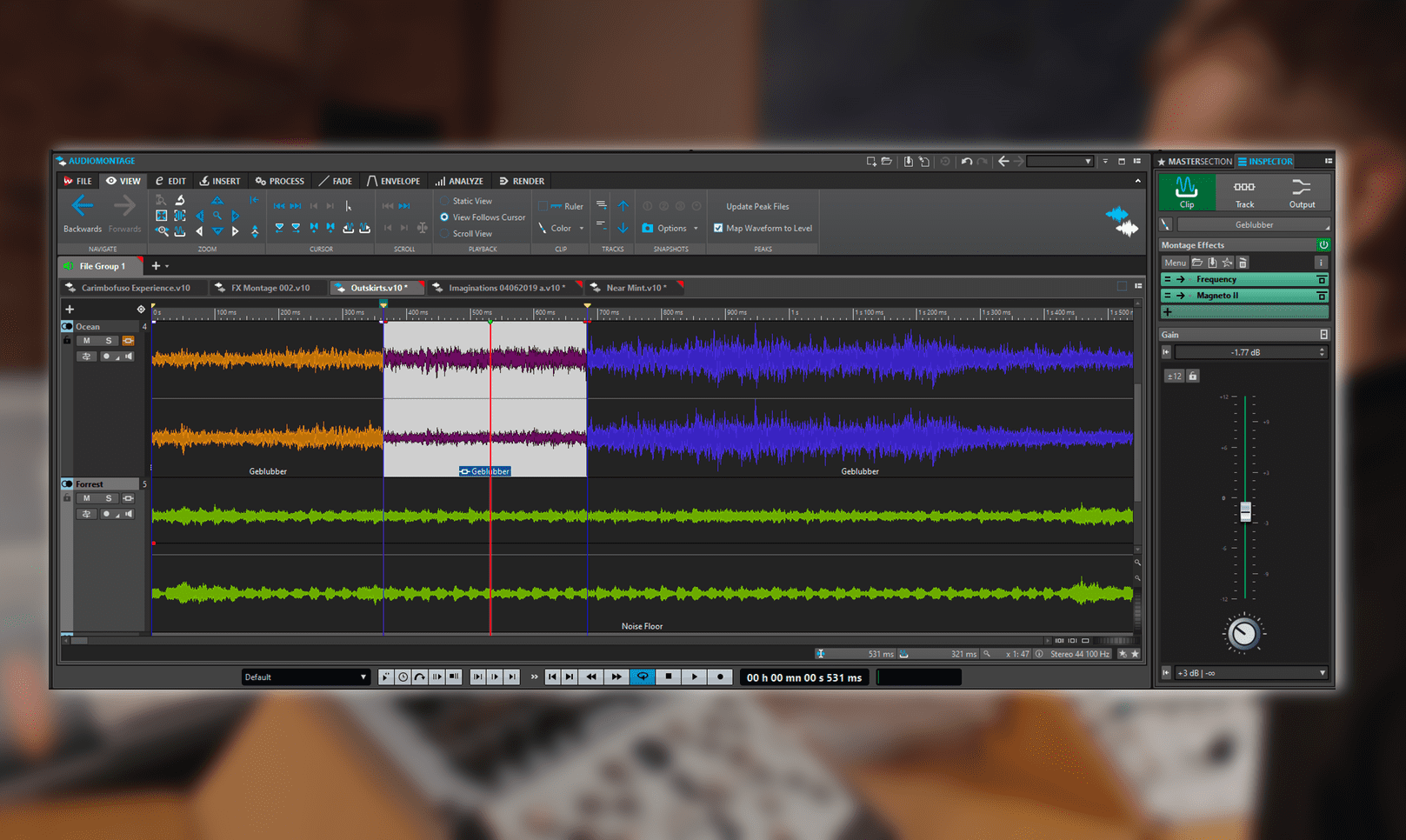



A Reference Track can be routed to the main outputs, to the Playback Processing Section or to a user-defined reference track output, where unused audio outputs on your hardware can be utilized for playback.

This allows you to add a reference audio file and switch playback between the reference track and the montage tracks that you are working on, without any glitches or latency. This means you can process audio in another editor - for example, Steinberg SpectraLayers - without having to leave WaveLab, thus making your workflow more efficient.WaveLab 10 introduces a new track type in the Audio Montage workspace, the Reference Track.
#Steinberg wavelab elements 10 pro#
The Pro version of WaveLab allows you to launch external audio editors from inside of it. (Pro version only.) Opening audio editors from within WaveLab These are available in the Master section, giving you even more options for processing audio. More effects and playback processing slots (Pro version only.) The Pro version allows the usage of external signal processors. This comes in the form of External FX Busses allow for the integration of hardware effects into the WaveLab 10 signal chain. In addition, you now can move markers to the nearest zero-crossing point, and the Marker window adds a Follow Playback control. The Pro version also offers several improvements to its marker capabilities, including the ability to import markers from XML files. Non-destructive inline editing is now available in Audio Montage. This new capability added to the Pro version allows you to non-destructively edit audio inside an Audio Montage, providing a more DAW-like workflow. You can even process them through the Master section and plug-in chain on the way in. Record as many live streams into WaveLab 10 as your input device/system can handle. A Reference Track in the Pro version allows for A/B comparisons. The Pro version of WaveLab 10 introduces a Reference Track in the Audio Montage that can be easily compared with the audio in your project. When mastering, the ability to compare your project with other audio is extremely helpful. The Effect Tool Window has been replaced with the easier-to-use Montage Inspector, and the Audio Montage Track List has been upgraded with the addition of several user-interface improvements. Audio Montage Inspector and Track List updated It’s easier than ever to open VST plug-ins inside of WaveLab. Shown in the Transport Bar, this makes it easy to track CPU usage as you go. This capability lets you check your work as the file bounces to disk, so you don’t have to open it again afterward to check it. This feature is now included, allowing you to listen to real-time playback of your project as it renders. Support for multitrack recording in an Audio Montage opens up new possibilities for how you use WaveLab 10. WaveLab Undo/Redo History window (right). Undo/Redo HistoryĪ new system has been added to the audio editor workspace so you can edit audio with the confidence that you can revert to an earlier state if need be. Now you can open video files in WaveLab, allowing you to see the visuals in sync with the audio you’re processing. In this article, we’ll take a look at its most significant new features.
#Steinberg wavelab elements 10 for mac#
Steinberg WaveLab 10 audio mastering and editing software for Mac ® and PC is available in two versions: Pro, which contains the full, comprehensive feature set, and Elements, which has a reduced, but still robust feature set.


 0 kommentar(er)
0 kommentar(er)
